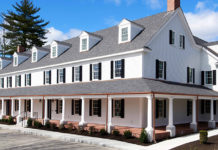I never visit Jackson Hole, Wyoming, without visiting The National Museum of Wildlife Art. It’s built inconspicuously into a butte overlooking the National Elk Refuge and is surrounded by the craggy peaks and wilderness of Yellowstone and Teton National Parks and the Bridger-Teton National Forest. Within the museum is a collection that’s no less inspired than, and often inspired by, its setting.
“In the world of wildlife art, we’re the premier place, and we really strive to remain in that place,” says curator Adam Harris. “We have an incredibly synergy with the environment we’re in; we have beautiful wildlife and nature outside, and artistic representations of the same inside. All those things add up to create something special and unexpected.”
Works by more than 200 artists are represented in the museum’s stunning collection, which includes paintings, sculptures, works on paper, and archival materials dating from 2000 B.C. to the present. Artists represented range from John J. Audubon to Eugene Delacroix, Albrecht Durer to Pablo Picasso. “The range of art is what you would expect to see in a larger metro area, not here,” Harris says. And how!
Especially this summer. When visiting last week, I was fortunate to view a special exhibit” “Picasso’s Park: Modernism meets Natural History.” It includes 31 etchings by the master created for the 1941 edition of Buffon’s Natural History, which original was published in 1741.
Beyond that, highlights among the 12 galleries include the nation’s largest public collection of works by impressionist Carl Rungius and the studio collection of illustrator-turned-painter John Clymer, who turned to portraying western history and wildlife after illustrating covers for the Saturday Evening Post.
Perhaps most memorable is the American Bison Collection, with more than 100 images portraying the symbol of western wildlife. These include “Chief,” a powerful, seductive, and spiritual painting by Robert Bateman, whom Harris considers “one of the best known and most accomplished living wildlife artists today.” It alone is worth the $10 adult admission; accompanying kids 18 and younger are free.
This time I visited in spring, when wildlfowers bloom in the elk refuge grasslands. Other times I’ve visited in winter, when up to 9,000 elk congregate here for a controversial winter feeding program. In winter, a sleigh ride into the elk refuge is a must do–it brings you right to the herd.













